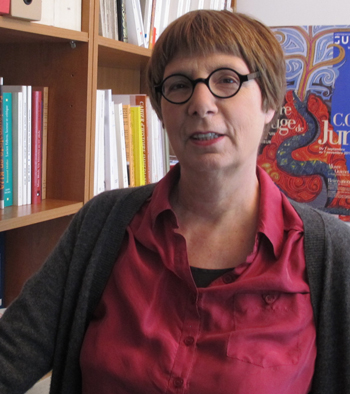
Sonia Combe
With the publication of her book Une vie contre une autre (One Life Against Another) historian Sonia Combe has become one of the first French scholars to extensively use the Visual History Archive in academic research – and she hopes many other researchers will follow in her footsteps.
Combe is a historian, researcher at the ISP-CNRS (University of Paris West) and research associate at the Centre Marc Bloch in Berlin, where she taught at the Humboldt University and the Freie University. She first heard about the USC Shoah Foundation in the 1990s – then titled the Survivors of the Shoah Visual History Foundation – while serving as a historical advisor for Michel Daëron's documentary La chaconne d’Auschwitz (Bach in Auschwitz). She was immediately interested, she said, because she testimony has always been central to her own research – though her fellow scholars don’t always agree.
“Repeatedly I have to argue with colleagues that among sources there is no hierarchy. Contemporary history cannot be written exclusively on basis of documents,” Combe said. “Historians and eyewitnesses may work separately but at a certain point they need to cooperate. Even if testimonies do not provide the same information as the documents, I often found that witnesses provide answers where documents cannot.”
In her fieldwork, Combe said she has often found oral history to be the only way to learn about societies of the past. Political discourse and historical literature do not always represent the past accurately.
For her latest book, Une vie contre une autre : Echange de victime et modalité de survie dans le camp de Buchenwald (One Life Against Another : Exchange of victims and method of survival in Buchenwald) Combe was inspired by a story of the “boy of Buchenwald,” Stefan Jerzy Zweig. The communist resistance in the camp saved Zweig, but years later, some claimed that he had been saved at the expense of another boy. Therefore, Combe said, in the German public discourse, the communist resistance fighters were no longer viewed as heroes but as Nazi collaborators.
Combe said she found this moral judgment surprising, since it seems that sacrifices were often made in the camps and people frequently survived because of people who died. However, most survivors involved in these incidents did not talk about it in their written accounts of the Holocaust. So, she turned to the Visual History Archive.
Using indexing terms to narrow her search, Combe found more than 100 testimonies of survivors who explained how these exchanges worked. It was especially helpful for her research to watch testimonies of survivors from the former Soviet Union and Soviet-dominated countries, since not many survivors from these areas had been interviewed before.
Combe said that luckily, she had access to the Visual History Archive while she taught at the Freie Universität in Berlin. Her research would not have been possible otherwise because the Visual History Archive was not yet available in France. Now that ENS Lyon is a full access site, it will be much easier for French scholars to incorporate it into their research.
“Let’s hope this new possibility will help oral history and testimonies to gain the place they deserve in writing of contemporary history,” Combe said.